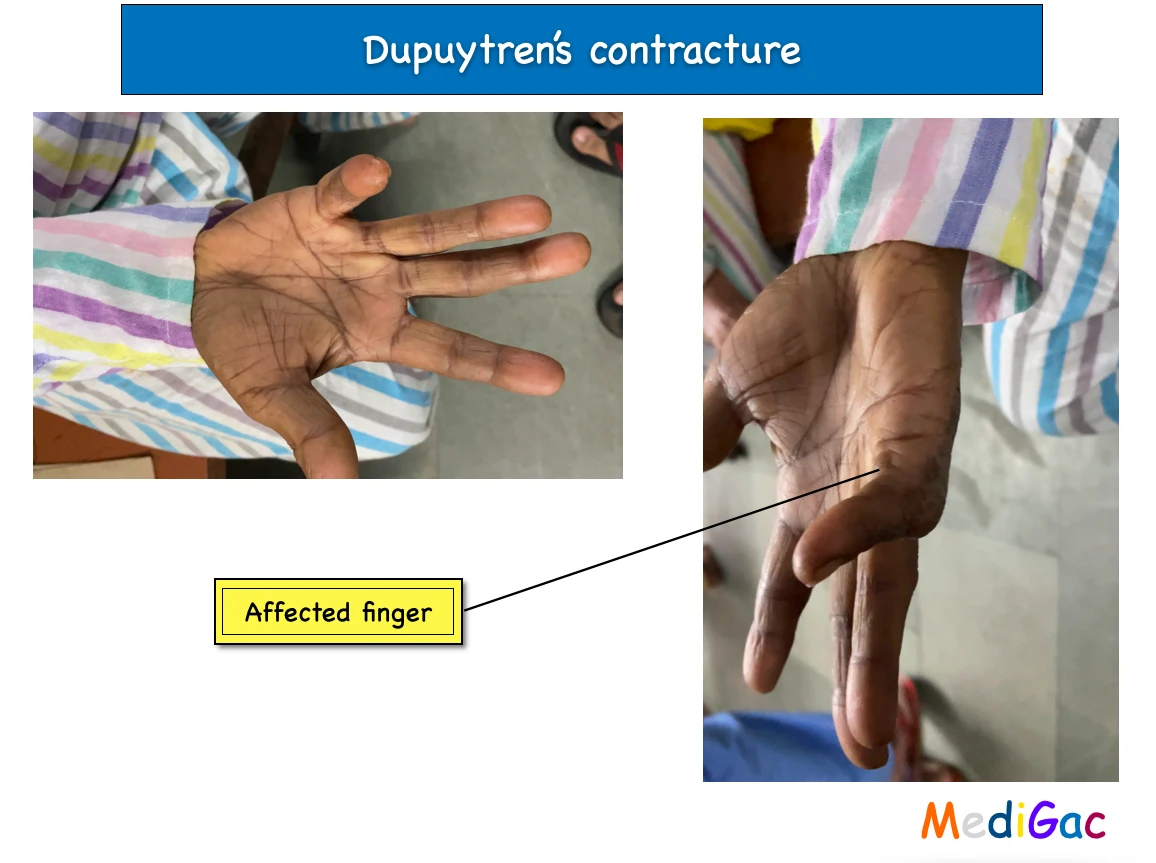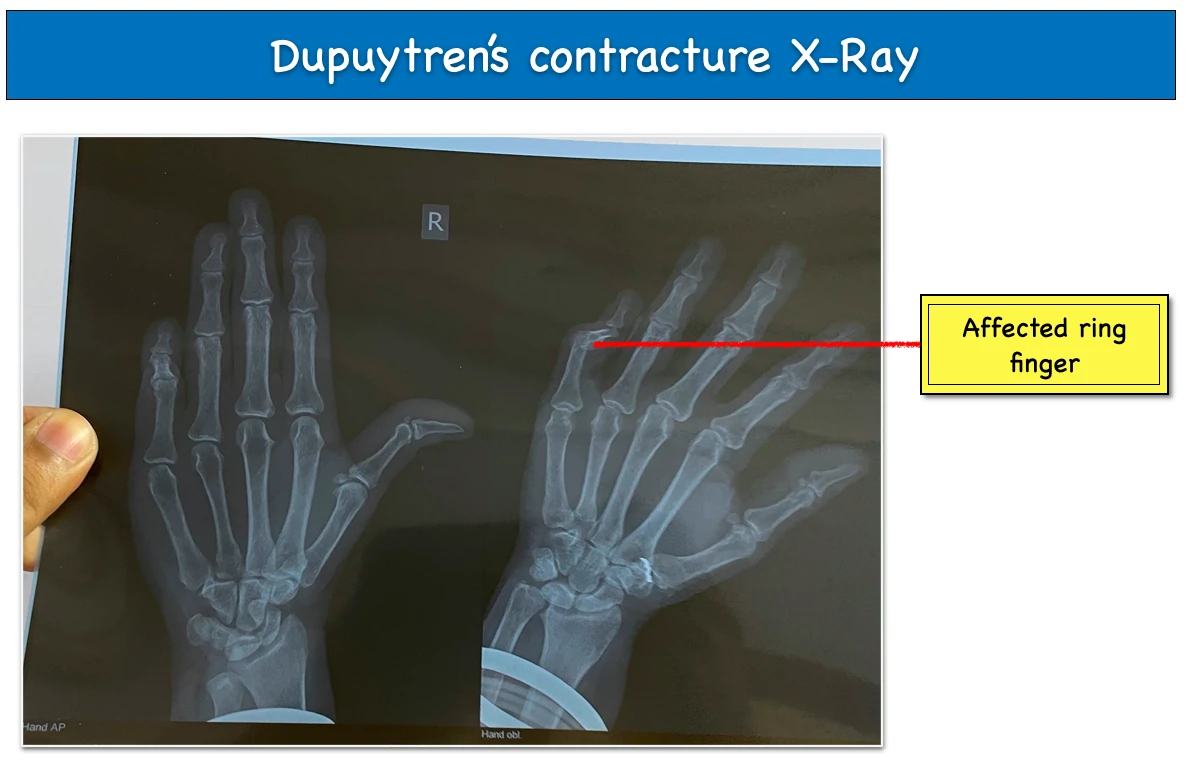
Dupuytren’s contracture or contracture of the palmar aponeurosis. This condition causes the palmar aponeurosis to thicken and shorten, resulting in the flexion deformity of one or more fingers.
Specific cause of this disease is unknown, but the disorder is more common in cirrhotic patients and in epileptics taking sodium hydantoin.
1. Pathoanatomy :
- The aponeurosis, or a portion of it, thickens and steadily contracts in Dupuytren’s contracture, causing the fingers to bend at the metacarpophalangeal and proximal interphalangeal joints.
- The ring finger is most frequently impacted. Typically, only the medial three fingers are affected by the contracture.
2. Clinical features :
- Early stage – At the bases of the ring and little fingers, there is a thickening of the palmar aponeurosis.
- Later stage – There is a development of finger flexion deformity.
3. Investigations :
- Xray – Affected finger will show bone contracture

4. Treatment :
- Medical management : The taut cord in your the can be injected with the enzyme collagenase Clostridium histolyticum (Xiaflex) to soften and weaken it.
- Surgical management : The palmar aponeurosis may need to be removed (a procedure known as a “subtotal excision”) if the deformity is severe and interferes with the patient’s ability to function.